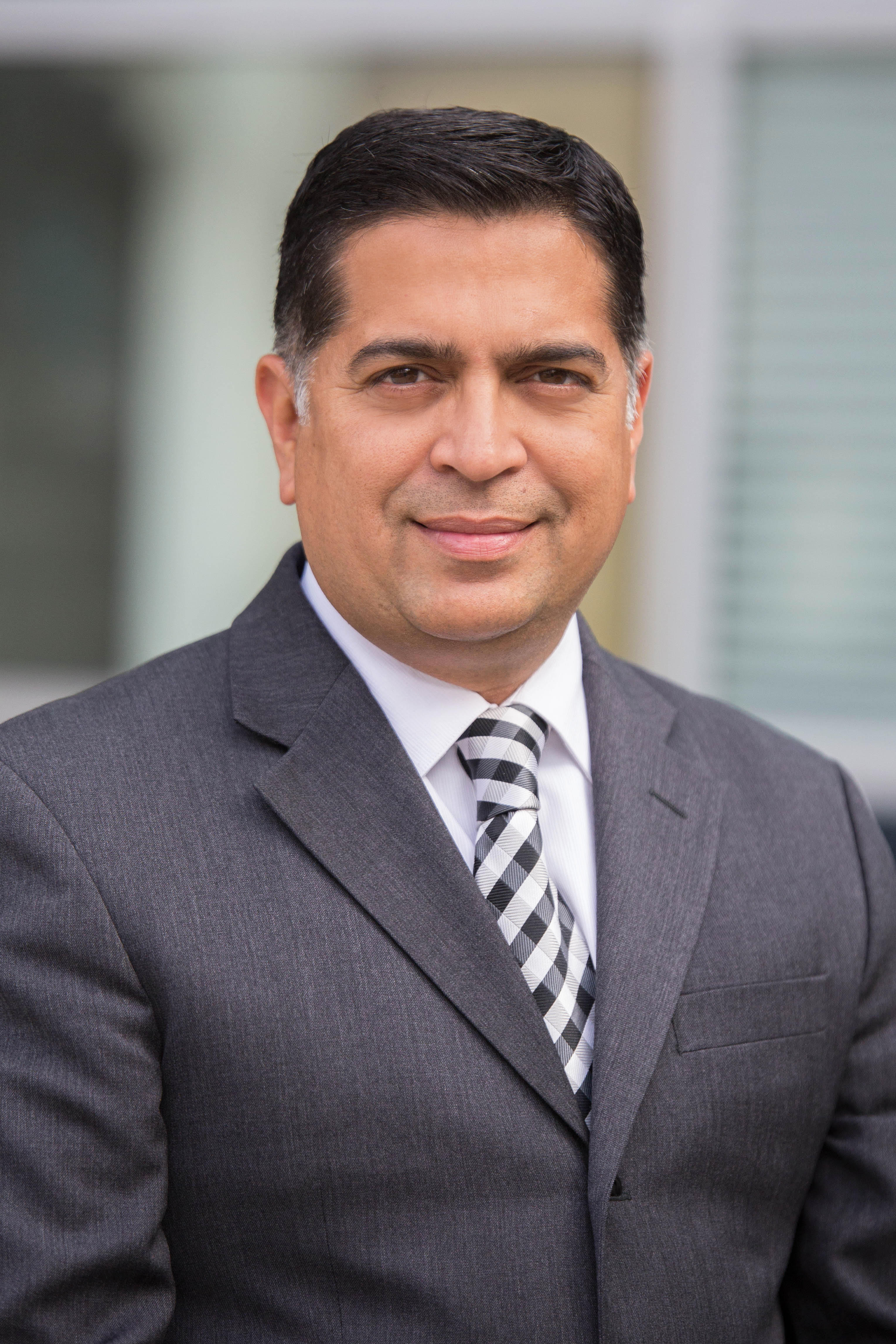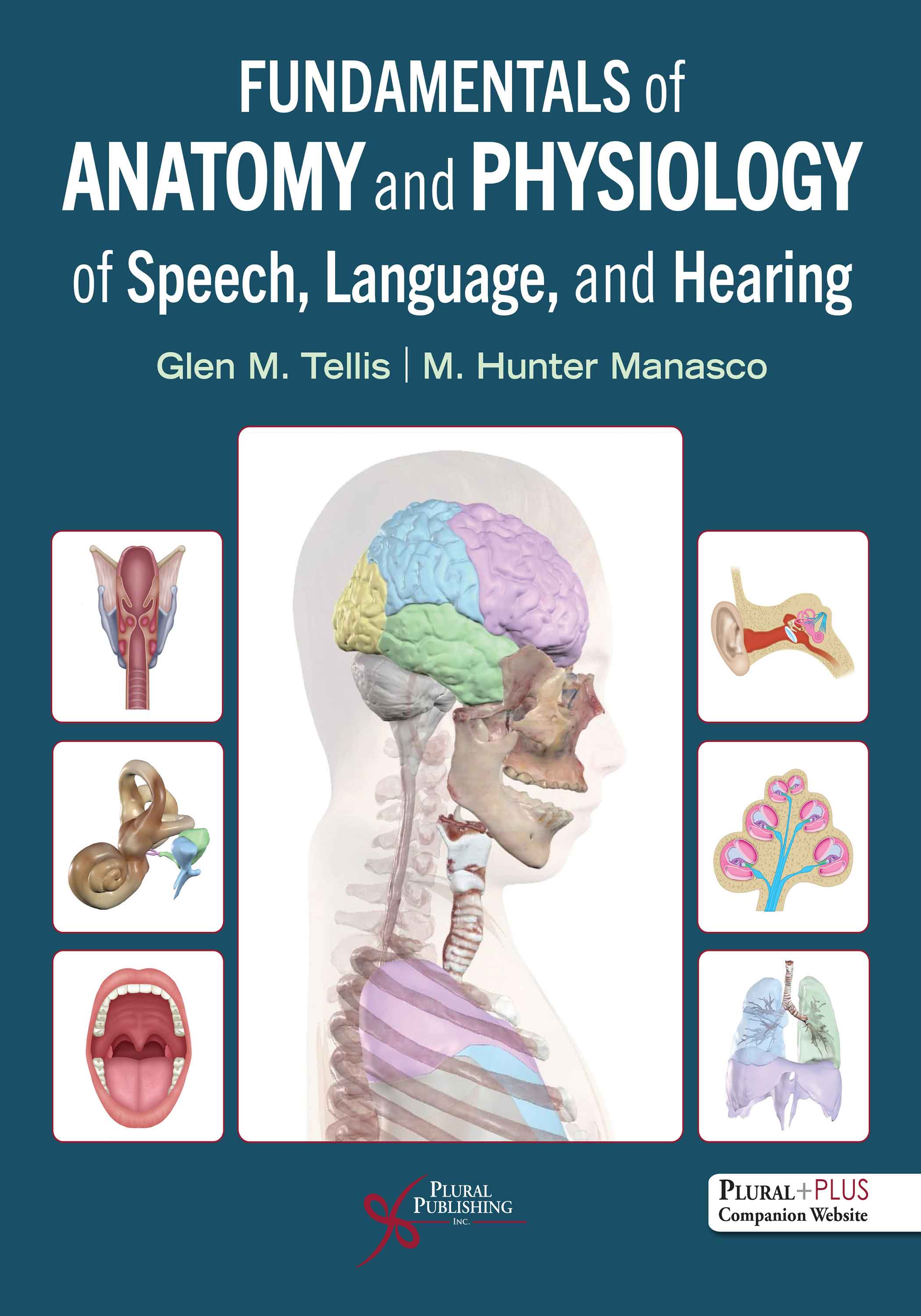
Fundamentals of Anatomy and Physiology of Speech, Language, and Hearing
First Edition
Glen M. Tellis, M. Hunter Manasco
Details: 478 pages, Full Color, Hardcover, 8.5" x 11"
ISBN13: 978-1-63550-720-1
© 2025 | Available
For Instructors
Purchase
Designed to meet the distinctive needs of today’s undergraduates in communication sciences and disorders, Fundamentals of Anatomy and Physiology of Speech, Language, and Hearing provides an accessible and visually engaging comprehensive introduction to the structures and functions of respiration, phonation, voice, articulation, resonance, swallowing, hearing, balance, neuroanatomy, and neurophysiology.
Authors Glen M. Tellis and M. Hunter Manasco use their experiences in the classroom to inform their approach to student learning. Each topic is concisely introduced in bullet-point form and then augmented with more detailed text, boxed content, illustrations, and tables. In addition to this easily manageable method of presenting information, the book also provides extensive supplementary material on a companion website. This technology-supported pedagogical approach allows students to review concepts via detailed study guides with anatomical labels, explore cadaver images, and view them as an extension of the textbook. This is the only text with real cadaver images from Anatomage’s 3D dissection table allowing an unparalleled glimpse into the anatomical structures of the human body, featuring true-to-life colors with an impressive level of detail.
Drs. Tellis and Manasco’s active learning approach will encourage and challenge students to think deeply and critically about the anatomy and physiology related to speech, language, and hearing. This immersive and technology-centered process is intended to increase student comprehension, retention, performance, and enjoyment of the material.
Key Features
- Unique bullet-point format to increase comprehension and retention
- 340+ color figures boost student engagement and include both anatomical illustrations and real human cadaver images from Anatomage’s 3D anatomy table
- Chapter learning objectives to guide instruction
- Boxed features with historical and cultural contexts
- Bolded key terms and glossary
- Content-aligned resources for instructors and students on a companion website
For a closer look at the many features of this textbook, including a practical demonstration of the student and instructor ancillaries, watch this recorded webinar, presented by Drs. Tellis and Manasco.
PluralPlus Online Ancillaries
For instructors: PowerPoint Slides, Image Bank, Test Bank, Videos
For students: Image Bank, Quizzes, eFlashcards, Study Guides, Audios, Podcasts
Preface
Acknowledgments
Chapter 1. Introduction
Key Terms
Biology
Anatomy
Physiology
Anatomical Nomenclature
Anatomical Orientation
Anatomical Terms
Body Systems That Support Speech, Language, and Hearing
Cell
Tissues
Joints or Articulations
Organs
Systems
Cranial Nerves
Olfactory
Optic
Oculomotor
Trochlear
Trigeminal
Abducens
Facial
Vestibulocochlear
Glossopharyngeal
Vagus
Accessory
Hypoglossal
Chapter Summary
References
Chapter 2. Anatomy of Respiration
Introduction to Respiration
The Skeletal Framework for Respiration
The Bony Thorax
The Visceral Thorax
Respiratory Passages
Lungs
Respiratory Tissue and Gas Exchange
Muscles of Respiration
Patterns of Muscular Use in Respiration
Categorization of Muscles of Respiration
Primary Muscle of Inspiration
Accessory Muscles of Inspiration
Muscles of Expiration
Chapter Summary
Reference
Chapter 3. Physiology of Respiration
Introduction to Physiology of Respiration
Forces of Respiration
Active Force of Respiration
Passive Forces of Respiration
Pressures Involved in Respiration
Physics of Respiration/Breathing
Understanding the Mechanical Cycle of Respiration
Quiet Respiration: Quiet Inspiration/Passive Expiration
Forced Respiration: Forced Inspiration/Forced Expiration
Lung Volumes and Capacities
Changes in Respiration With Advanced Age
Measurement of Respiration and Instrumentation
Measuring Rate
Measuring Pressure
Measuring Lung Volumes and Respiratory Capacities
Process of Gas Exchange
Chapter Summary
References
Chapter 4. Anatomy of Phonation
Introduction
Larynx
Cartilages of the Larynx
Membranes and Ligaments
Muscles of the Larynx
Chapter Summary
References
Chapter 5. Physiology of Phonation
Nonspeech (Biological) Functions
Breathing
Abdominal and Thoracic Fixation
Protection During the Swallow Reflex
Throat Clearing and Coughing
Phonation
Coordinative Structures of Voice
Theories of Phonation
Myoelastic-Aerodynamic Theory
Body-Cover Theory
Nonlinear Source-Filter Coupling Theory
Parameters of Voice
Elasticity, Stiffness, and Inertia
Acoustic Parameters
Amplitude and Intensity
Aerodynamic Parameters
Variations in Vocal Fold Closure Patterns, Mucosal Wave, and Periodicity of Vibration
Vocal Fold Closure
Movement of the Mucosal Wave
Regularity and Periodicity of Vibration
Vocal Register
Sustained Phonation and Attack
Linguistic Aspects of Phonation
Chapter Summary
References
Chapter 6. Anatomy of Articulation, Swallowing, and Resonance
Introduction
Bones of the Face
Mandible
Maxillae
Anatomy of the Hard Palate
Zygomatic Bones
Nasal Bones
Palatine Bones
Inferior Nasal Conchae
Vomer
Lacrimal Bone
Bones of the Skull
Ethmoid
Frontal Bone
Parietal Bones
Temporal Bones
Occipital Bone
Sphenoid
Muscles of the Face
Orbicularis Oris
Transverse Muscles
Elevators
Depressors
Parallel Muscles: Incisivus Labii Superior and the Incisivus Labii Inferior
Supplementary Muscles of Facial Expression
Cavities of the Vocal Tract
The Oral Cavity
Buccal Cavity
Nasal Cavity
Pharynx
Muscles of the Tongue
Intrinsic Muscles of the Tongue
Extrinsic Muscle of the Tongue
Muscles of Mastication
Masseter (Figure 6–58, Figure 6–59)
Temporalis (Figure 6–58, Figure 6–60)
Medial Pterygoid (Figure 6–61)
Lateral Pterygoid (Figure 6–62)
Digastricus (Figure 6–58, Figure 6–63)
Mylohyoid (Figure 6–58, Figure 6–64)
Geniohyoid (Figure 6–53, Figure 6–58)
Platysma (Figure 6–34)
Muscles of the Velum
Elevators of the Velum
Depressors of the Velum
Muscles of the Pharynx
Pharyngeal Constrictors
Longitudinal Muscles of the Pharynx
Chapter Summary
References
Chapter 7. Physiology of Articulation and Resonance
Introduction to Articulation and Resonance
Physiology of Articulation and Resonance
Role of the Lips in Articulation
Role of the Tongue in Articulation
Role of the Muscles of the Tongue in Articulation
Role of the Tongue in Consonant Production
Role of the Tongue in Vowel Production
Role of the Teeth in Articulation
Role of the Mandible in Articulation
Role of Cheeks in Articulation and Resonance
Role of Velum in Articulation and Resonance
Role of the Pharynx in Articulation
Chapter Summary
References
Chapter 8. Physiology of Swallowing
Introduction to Swallowing
Process of Mastication and Deglutition
Oral Preparatory Stage Described
Oral Stage Described
Pharyngeal Stage Described
Esophageal Stage Described
Instrumentation
Videofluoroscopic Swallow Study/Modified Barium Swallow
Fiberoptic Endoscopic Evaluation of Swallow
High Resolution Manometry
Changes With Age
Childhood Development
Changes With Normal Aging
Coordination of Respiration and Deglutition
Chapter Summary
References
Chapter 9. Anatomy of Hearing
Structures of the Auditory Mechanism
Outer Ear
Auricle
External Auditory Meatus
Tympanic Membrane
Middle Ear
Ossicles
Muscles of the Middle Ear
Landmarks of the Middle Ear Cavity
Inner Ear
Auditory System: Cochlea and Related Structures
Vestibular System
Vestibulocochlear Nerve (CN VIII)
Changes With Age (Presbycusis)
Chapter Summary
References
Chapter 10. Physiology of Hearing and Balance
Properties of Sound
Physiology of the Outer Ear
Pinna and External Auditory Meatus
Physiology of the Middle Ear
Movement of the Tympanic Membrane and the Ossicular Chain
Eustachian Tube
Physiology of the Inner Ear
Stimulation of the Cochlea
Transduction
Auditory Central Nervous System
Afferent Pathway
Efferent Pathways
Auditory Cortex: Auditory Processing and Speech Perception
Vestibular System
Instrumentation
Otoscopy
Pure Tone Audiometry
Speech Reception Threshold
Tympanometry
Acoustic Reflex Testing
Otoacoustic Emissions
Auditory Brainstem Response
Electrocochleography
Types of Hearing Loss
Conductive Hearing Loss
Sensorineural Hearing Loss
Mixed Hearing Loss
Chapter Summary
References
Chapter 11. Neuroanatomy and Neurophysiology: Part 1
Cells of the Nervous System
Neurons
Neuroglia
The Central Nervous System
The Brain
Chapter Summary
References
Chapter 12. Neuroanatomy and Neurophysiology: Part 2
The Lobes of the Cerebral Hemispheres
Frontal Lobes
Parietal Lobes
Temporal Lobes
The Occipital Lobes
Subcortical Structures
The Brainstem
The Cerebellum
The Thalamus
The Basal Ganglia
The Limbic System
The Spinal Cord
Blood Supply to the Brain
The Peripheral Nervous System
The Spinal Nerves
Chapter Summary
References
Glossary
Index
Fundamentals of Anatomy and Physiology of Speech, Language, and Hearing comes with access to supplementary student and instructor resources on a PluralPlus companion website.
The companion website is located at: https://www.pluralpublishing.com/publication/fundap
STUDENTS:
The student resources include Quizzes, Flashcards, Image Bank, and Study Guides.
To access the student resources, you must register on the companion website and log in using the access code located in the front of your textbook.
INSTRUCTORS:
The instructor resources include an image bank, PowerPoint slides for each chapter, a midterm and final exam, and chapter tests. You will also have access to all of the student resources listed above.
To access the instructor resources, you must contact Plural Publishing, Inc. to be verified as an instructor and receive your access code.
Email: instructormaterials@pluralpublishing.com
Tel: 866-758-7251 (toll free) or 858-492-1555
*Note for students: If you have purchased this textbook used or have rented it, your access code will not work if it was already redeemed by the original buyer of the book. Plural Publishing does not offer replacement access codes for used or rented textbooks.
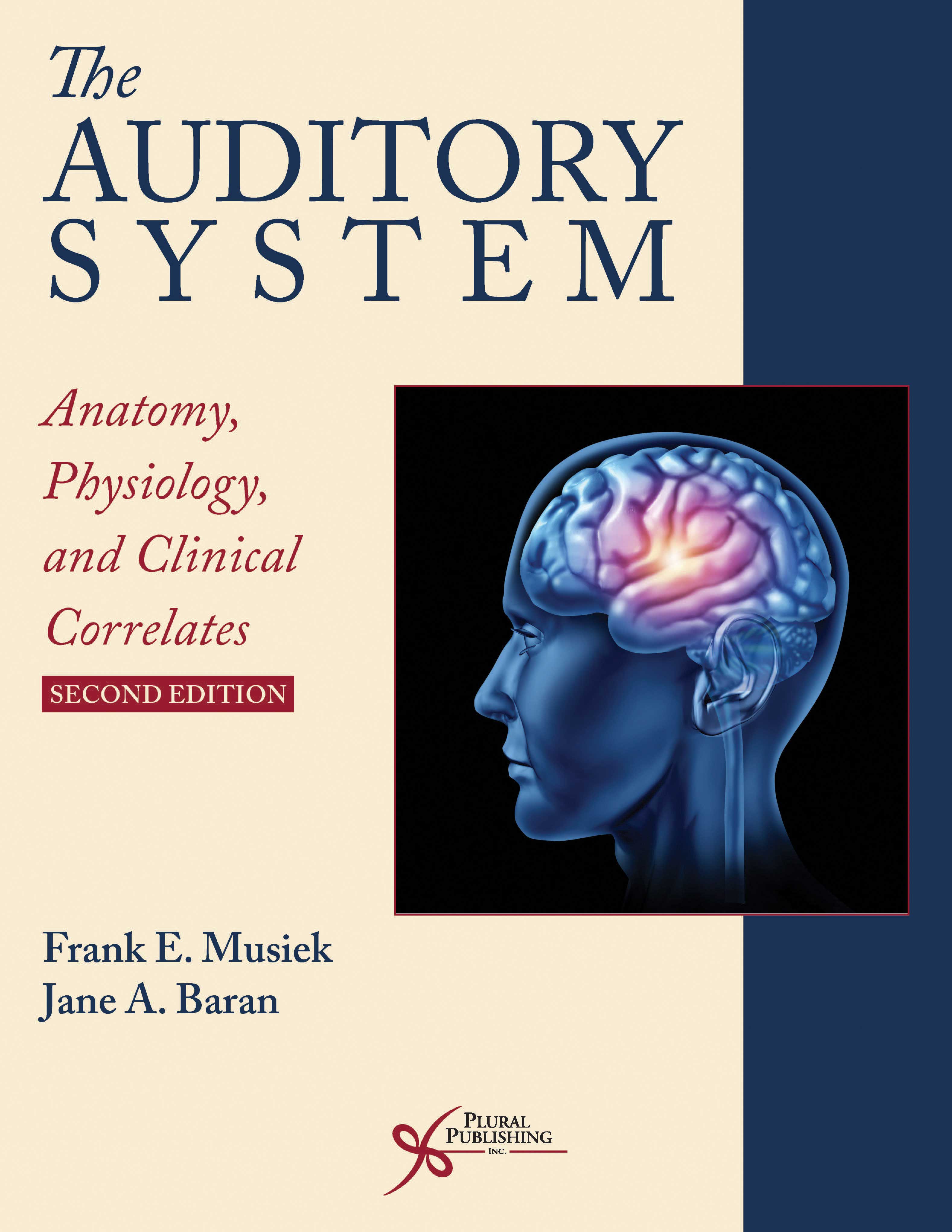
The Auditory System: Anatomy, Physiology, and Clinical Correlates
Second Edition
Frank E. Musiek, Jane A. Baran
Details: 487 pages, Full Color, Hardcover, 8.5" x 11"
ISBN13: 978-1-94488-300-3
© 2020 | Available
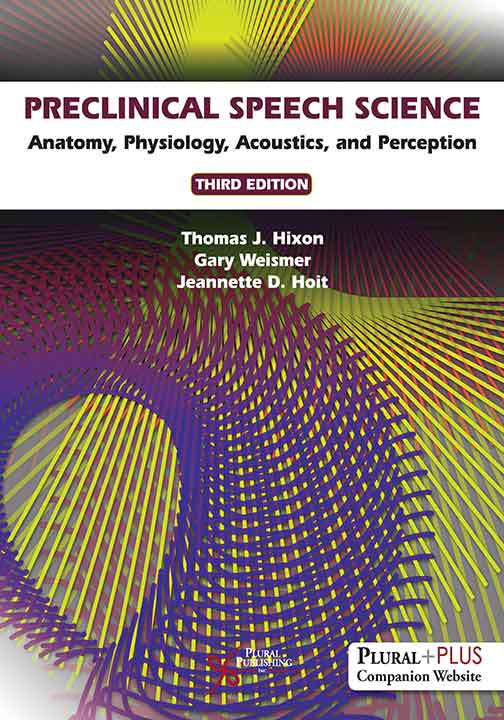
Preclinical Speech Science: Anatomy, Physiology, Acoustics, and Perception
Third Edition
Thomas J. Hixon, Gary Weismer, Jeannette D. Hoit
Details: 728 pages, Full Color, Hardcover, 8.5" x 11"
ISBN13: 978-1-63550-061-5
© 2020 | Available
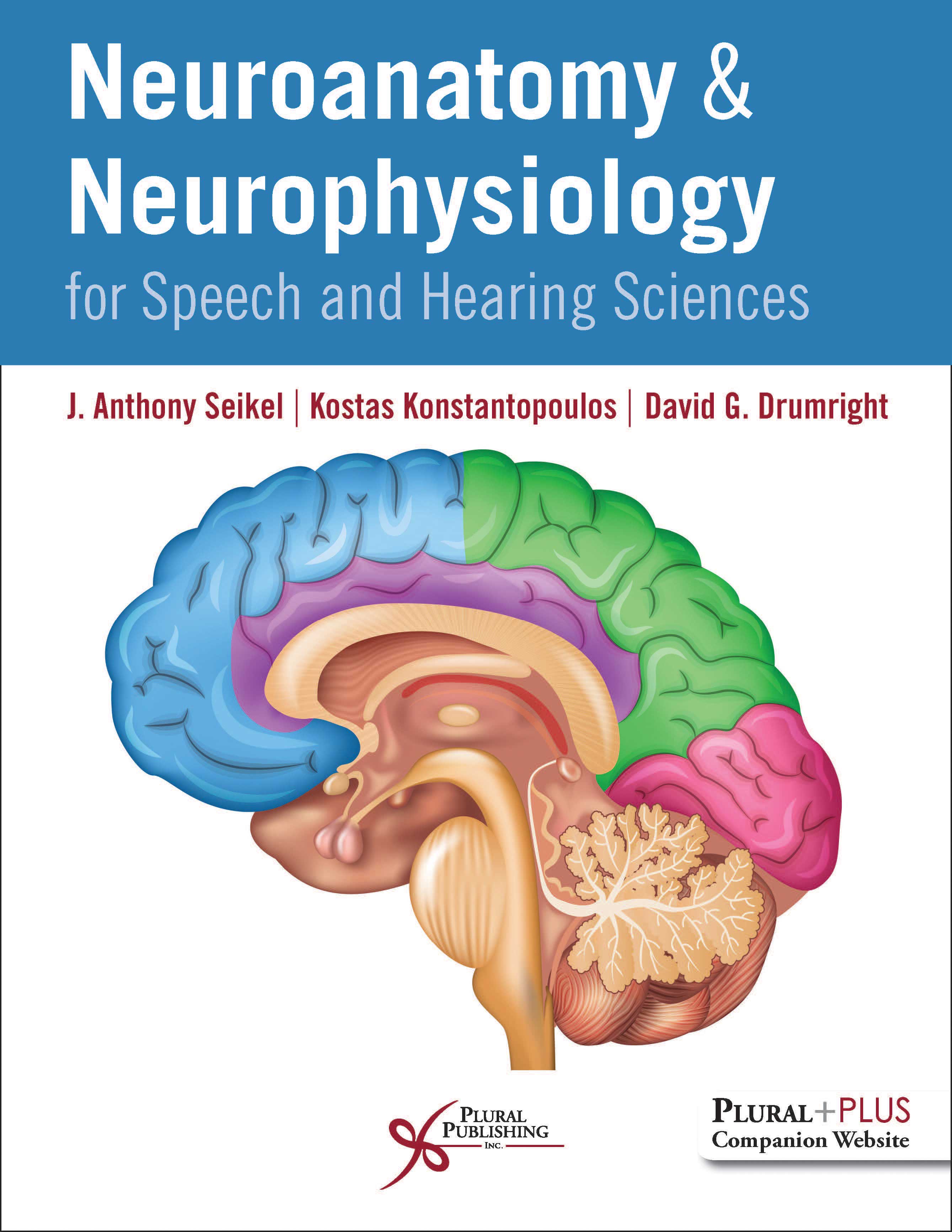
Neuroanatomy and Neurophysiology for Speech and Hearing Sciences.
First Edition
J. Anthony Seikel, Kostas Konstantopoulos, David G. Drumright
Details: 385 pages, Full Color, Hardcover, 8.5" x 11"
ISBN13: 978-1-63550-071-4
© 2020 | Available
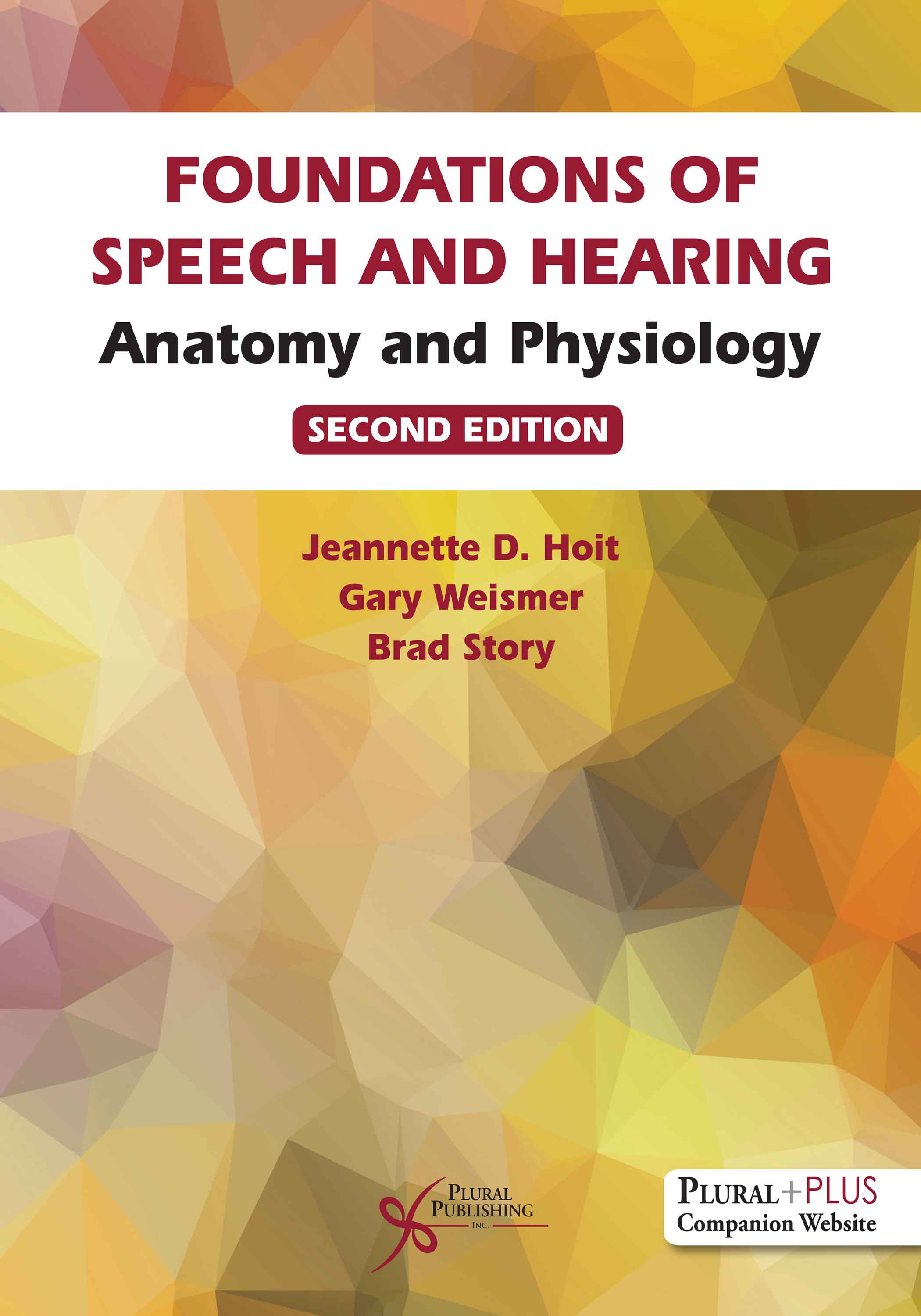
Foundations of Speech and Hearing: Anatomy and Physiology.
Second Edition
Jeannette D. Hoit, Gary Weismer, Brad H. Story
Details: 348 pages, Full Color, Hardcover, 8.5" x 11"
ISBN13: 978-1-63550-306-7
© 2022 | Available
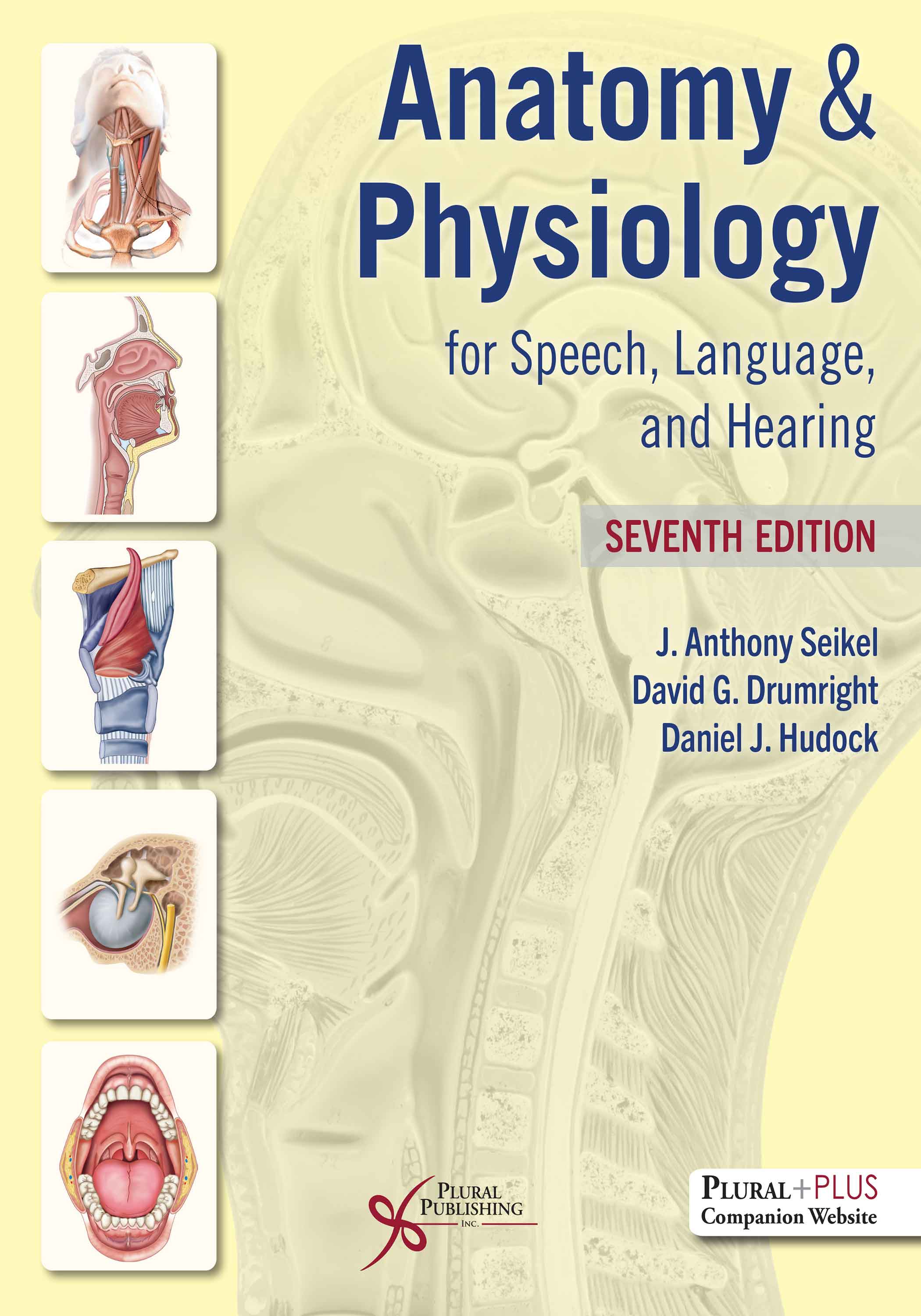
Anatomy & Physiology for Speech, Language, and Hearing
Seventh Edition
J. Anthony Seikel, David G. Drumright, Daniel J. Hudock
Details: 835 pages, Full Color, Hardcover, 8.5" x 11", with ANAQUEST study software
ISBN13: 978-1-63550-628-0
© 2025 | Available
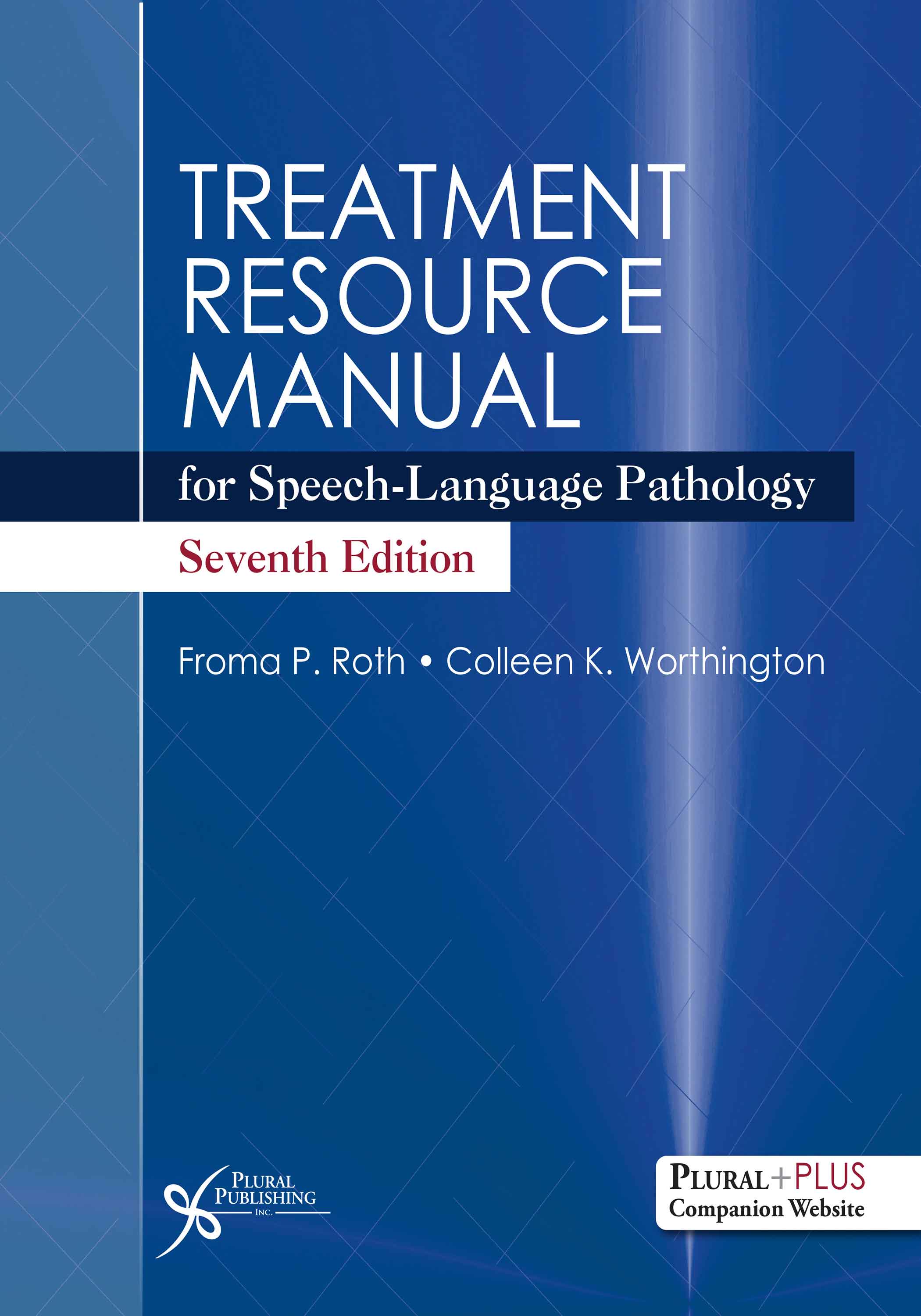
Treatment Resource Manual for Speech-Language Pathology
Seventh Edition
Froma P. Roth, Colleen K. Worthington
Details: 447 pages, Two-Color, Softcover, 8.5" x 11"
ISBN13: 978-1-63550-653-2
© 2025 | Available
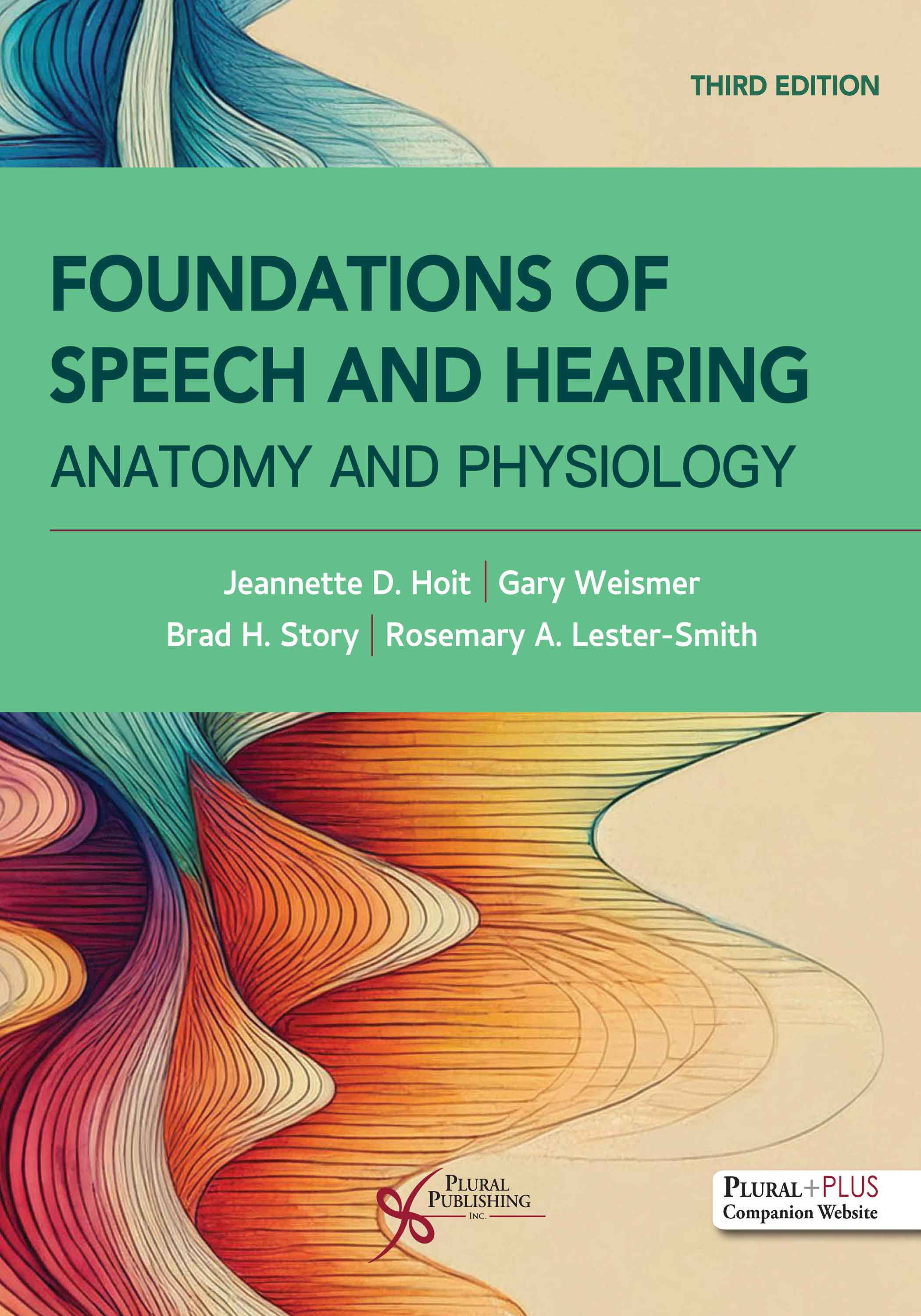
Foundations of Speech and Hearing: Anatomy and Physiology
Third Edition
Jeannette D. Hoit, Gary Weismer, Brad H. Story, Rosemary A. Lester-Smith
Details: 386 pages, Full Color, Hardcover, 8.5" x 11"
ISBN13: 978-1-63550-871-0
© 2027 | Available

